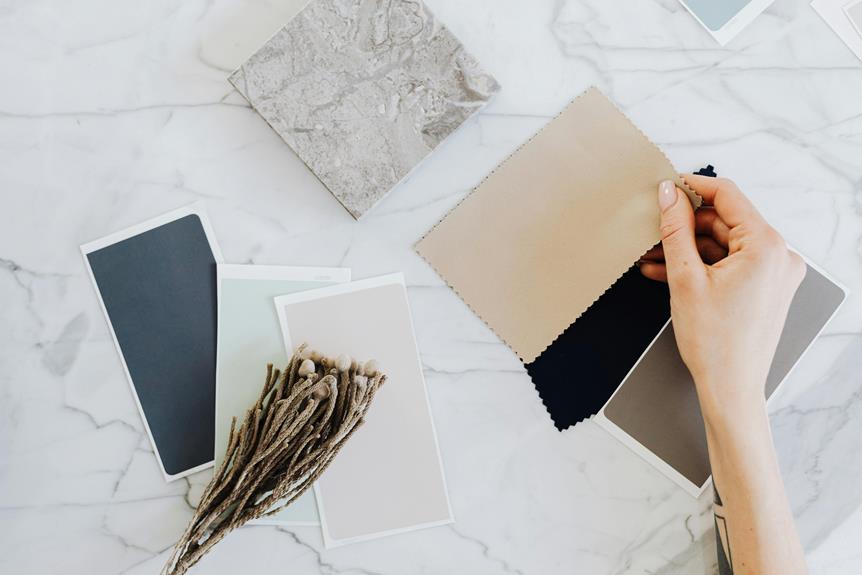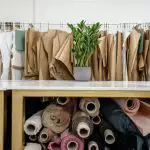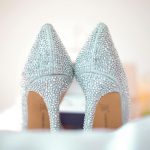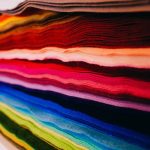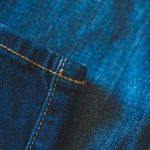When you're choosing broadcloth for your project, it's crucial to consider several factors that can impact the final outcome. Start by thinking about the material—do you need breathability or durability? Next, weigh the fabric; lighter options are perfect for shirts, while heavier varieties lend structure to garments. You'll also want to pay attention to texture and comfort, as well as the aesthetic appeal of colors and patterns. But that's just the beginning; understanding how these elements interact can make all the difference in achieving your vision. So, what's the next step you should take?
Table of Contents
Understanding Broadcloth Types
When you're selecting broadcloth, it's essential to understand the different types available to find the perfect fit for your project. Broadcloth is primarily categorized by its fiber content, weave, and finish.
The most common materials include cotton, polyester, and blends. Cotton broadcloth offers breathability and softness, making it ideal for casual garments. Polyester broadcloth, on the other hand, is durable and wrinkle-resistant, perfect for items that require longevity.
You'll also encounter various weaves; the tight weave creates a smooth surface, while a looser weave can add texture and character. If you're looking for a shiny finish, opt for a sateen broadcloth, which has a lustrous surface. Conversely, if you prefer a matte look, traditional cotton broadcloth will suit your needs.
Don't forget to consider the intended use of your fabric. Whether you're making shirts, dresses, or home décor items, the type of broadcloth you choose can significantly affect the final product.
Take your time to explore and feel the different fabrics. This hands-on approach will help you make an informed decision and ensure your project turns out just as you envision.
Evaluating Fabric Weight
Understanding broadcloth types lays the groundwork for evaluating fabric weight, which can greatly influence the drape and feel of your finished project.
When you're choosing broadcloth, consider the weight in ounces per square yard. Lighter weights, around 3 to 4 ounces, are ideal for garments like shirts and blouses, offering a soft, flowing drape that's comfortable to wear.
Medium-weight broadcloth, typically 5 to 6 ounces, provides versatility. It works well for a range of projects, from dresses to home décor. Heavier weights, over 7 ounces, are suitable for structured clothing and upholstery, giving you durability and a more defined shape.
Think about the intended use of the fabric and how much structure you want. If you're creating something that requires stiffness, lean towards heavier options. For flowing garments, lighter fabrics might be best.
Always check the fabric's specifications before purchasing, as this can help you avoid surprises in your project. Remember, the weight you choose will directly affect how your fabric behaves, so take the time to evaluate it carefully.
Assessing Texture and Feel
Assessing the texture and feel of broadcloth is essential, as these factors can significantly impact the comfort and appearance of your final project.
When you run your fingers over the fabric, pay attention to its smoothness or roughness. A soft, smooth broadcloth can be perfect for clothing or items that will be worn close to the skin, while a coarser texture might work well for more durable applications like bags or upholstery.
Next, consider how the fabric drapes. Does it flow nicely, or does it feel stiff? A fabric that drapes well can enhance the overall design of your project, giving it an elegant look.
You'll also want to think about its breathability; if your project involves warmer weather or high activity, a more breathable broadcloth will keep you comfortable.
Choosing Colors and Patterns
After considering the texture and feel, selecting the right colors and patterns can elevate your broadcloth project and make it truly stand out.
Start by reflecting on the mood you want to convey. Bright colors can add a cheerful vibe, while muted tones create a more sophisticated look. Think about your audience and the purpose of your project; this will guide your color choices.
Next, consider complementary colors. Use a color wheel to identify shades that work well together. If you're feeling adventurous, you might mix bold colors with subtle patterns for a striking effect. On the other hand, if you're aiming for a classic look, opt for solid colors or simple patterns like stripes or polka dots.
Patterns also play a crucial role. If your project is intricate, go for a more subdued pattern to avoid overwhelming the design. Alternatively, if your project is simple, a bold pattern can add an exciting element.
Don't forget to consider how the colors and patterns you choose will work with other materials in your project. Ultimately, trust your instincts and have fun with the process!
Considering Project Requirements
When choosing broadcloth, keep your project's specific requirements in mind, as they'll significantly influence your fabric selection. Understanding what you need is crucial to ensure your project turns out just how you envision it. Whether you're making clothing, home decor, or craft items, knowing the intended use will guide your choices.
Consider these emotional factors that can impact your decision:
- Durability: You want your project to last, especially if it's for everyday use.
- Comfort: Fabrics that feel good against the skin can make a huge difference in wearability.
- Aesthetic Appeal: The right broadcloth can elevate your project and truly express your style.
- Ease of Care: Choose fabrics that fit your lifestyle; nobody wants to struggle with maintenance.
Frequently Asked Questions
Can Broadcloth Be Washed in a Washing Machine?
Yes, you can wash broadcloth in a washing machine. Just use a gentle cycle with cold water and mild detergent. Avoid bleach to keep the fabric's color and integrity intact, ensuring it lasts longer for your projects.
Is Broadcloth Suitable for Outdoor Projects?
Broadcloth isn't ideal for outdoor projects since it's not water-resistant and may fade in sunlight. If you're looking for durability and weather resistance, consider fabrics specifically designed for outdoor use instead.
How Does Broadcloth Compare to Other Fabric Types?
Broadcloth's smooth texture and durability make it a versatile choice, but it's heavier than some lightweight fabrics. Compared to cotton or linen, it offers a different drape and feel, impacting your project's overall outcome.
Can Broadcloth Be Used for Upholstery?
Yes, you can use broadcloth for upholstery. It's durable and comes in various colors, making it suitable for furniture. Just ensure it's thick enough to withstand wear and tear for lasting results.
What Is the Typical Cost Range for Broadcloth?
Broadcloth typically ranges from $3 to $10 per yard, depending on quality and brand. You'll find options at various price points, so consider your budget and project needs when making your selection.
- Tetron Fabric for Marine Applications: Durability and Use Cases - June 18, 2025
- Tetron Fabric for Outdoor Furniture: Weather Resistance and Care - June 18, 2025
- Tetron Fabric for Wall Coverings: Style and Application Tips - June 18, 2025

